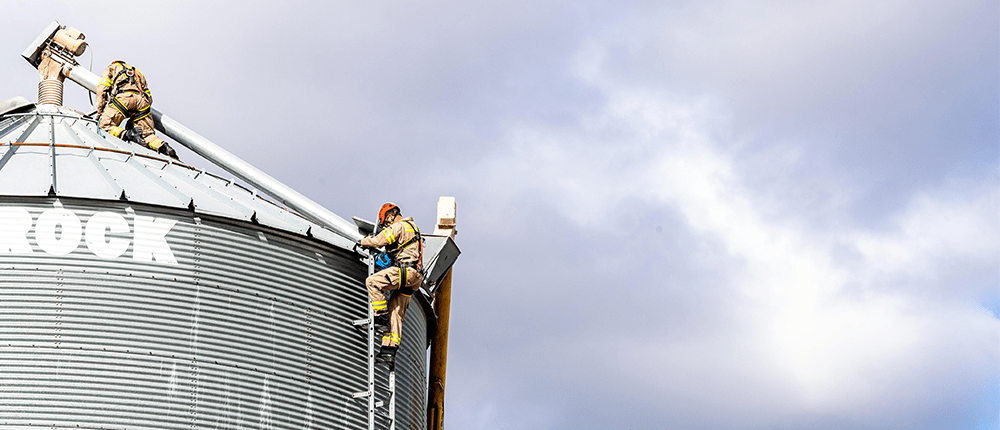The interior of a grain bin is one of the most hazardous places on a farm, so the best way to resolve situations with stored grain is safely outside. If you must enter a bin, be sure to know what you might find and plan accordingly.
“Farmers and grain handlers should remember there are many hazards they can encounter inside a grain bin, including engulfment from flowing grain, atmospheric conditions, and mechanical and electrical hazards,” says Jason Berkland, associate vice president of risk management with Nationwide. “There are also hazards from the equipment found inside the bin.
“No one should enter a bin without thinking through the risks or following safety protocol,” Berkland advises. “That requires wearing the proper protective equipment, such as a safety harness, turning off and locking out all augers or equipment before entering and having a spotter or attendant ready to help.
Other precautions can include using a gas meter to assess air quality and checking for off odors. Air that smells like spoiled or moldy grain could indicate there are grain bridges or vertical grain walls that could collapse.
Beware complacency, he adds. “Farmers and grain handlers figure they’ve been in that bin many times, they know the dangers and nothing has happened to them previously,” says Berkland. “As a result, they get into a mindset that nothing is going to happen going forward. We want them to carefully think about the situation, review the potential risks, have a plan and have someone with them every time they need to enter a bin.”
If possible, Berkland encourages farmers and grain handlers to stay out of grain bins altogether. “A zero-entry mentality is the only way to guarantee safety,” he says.
Since 2014, Nationwide and partners including CHS, have provided 150 rescue tubes and grain bin safety training to fire department personnel across 29 states, says Berkland. He adds that at least four of those tubes were involved in successful rescues. “That means four people went home to their families and we’re proud of that,” he says.
CHS Community Giving demonstrates the CHS values of cooperative spirit and safety through its giving efforts. Through CHS Community Giving support, in the past three years, 450 communities have received safety equipment and training. The CHS Seeds for Stewardship program matches cooperative contributions up to $5,000 for projects in rural communities, including grain bin rescue equipment. Since 2018, more than 360 communities have benefited from matching grants.
CHS Community Giving also partners with Nationwide to support Grain Bin Safety Week, an advocacy program that raises awareness about the hazards of entering a grain storage structure and provides education and training about those hazards. Grain Bin Safety Week is February 21–27, 2021. For more information about grain bin safety, go to thinkgrainbinsafety.com.
Hear more voices across the cooperative system discuss current ag topics from the ongoing Around the Table series at cooperativeownership.com.




